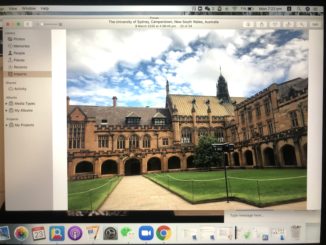
Story idea
I am interested in writing a news feature about the challenges for data researchers when they visualize COVID-19 data. As ordinary people, we could experience the effects that Covid-19 brings to our life, while we barely know how much it influences and the underlying information behind Covid-19. I would like to include insightful conversations with data researchers regarding the opportunities and challenges that data tells COVID-19 stories.
Since COVID-19 is a hot topic in Australia and also in other parts of the world, and big data as an emerging technology gets public attention as well. How could big data contribute to solving the COVID-19 pandemic? WHO and worldwide data researchers report updated news for governments to monitor the situation and to inform individuals to better protect themselves. The story carries newsworthiness through news values such as impact, timeliness, human interest, and currency.
Please refer to the following video and posts for a better understanding of how data could help the COVID-19 pandemic:
This great data visualization spotlights the political economy of frontline workers & risk: #Masks4All #MasksNow #Mascaras #mascarillasparatodos #PPE #PPEShortages #PPENow https://t.co/DXgSjZv2Js
— Jonathan Fox (@jonathanfox707) April 19, 2020
Covid-19 not for vis research to show-off: “It feels at best crass, and at worst dangerous, in the absence of a specific unmet data visualization need, and in an era where there are many people who desperately need their stories communicated” https://t.co/aLSO7TKSBn @birdbassador
— Christopher Collins (@ChrisNF) April 24, 2020
Chosen Publication and audiences
This feature is set out for The Conversation, an independent academic and research news publication delivered directly to the public. The Conversation’s audiences are mostly younger non-academic people who hope to get a better understanding of current affairs and complex issues. My article is compatible with that fact because it involves hot topics those audiences care about and also educates them with reliable information directly from the data researchers.
Our Editor @StephenKhan explains how The Conversation brings experts from around the world to cover #Coronavirus.
"The crisis shows that accurate, expert-driven analysis is crucial"
Read more, get daily updates https://t.co/wU54evI6vb
You can support us https://t.co/Xu9J7L9Hfw pic.twitter.com/ZwM6V7sE3m
— The Conversation (@ConversationUK) March 17, 2020
Twitter post from The Conversation
Structure
My potential plan for the structure of this article would be (in the following order):
- It will begin with the facts visible for our life changes (empty streets, sales of masks, gloves, sanitizers at stores, etc.- use of photo slideshows), and then discuss the causes of those facts associated with the information that data, which is invisible, could tell us (using graphs, embedded Twitter posts).
- Interviews with data researchers, data collectors, and other related professionals.
- Examples of good data visualizations that tell COVID-19 stories (using either embedded videos or social media posts.)
- Quotes from the experts
Sources of information
I will use the information from a wide range of sources from interviews, official health institution websites, data visualization websites, and reports, etc. for my article to give comprehensive information to my audiences.
Sources include:
- WHO websites
- Tableau Visualization (COVID-19)
- International SOS COVID-19 Data visualization
- Interview with Dr. Diane Cook, a data analysis professor from Monash University (who specialize in data mining and visualization)
- Interview with Dr. Kayla Maloney, a data analyst at the University of Sydney
I will be looking to interview Dr. Diane Cook and Dr. Kayla Maloney, as well as gaining more information from the above-listed websites.
Multimedia, Hypertext & Interactivity
The article will feature a mix of multimedia, hypertext, and interactive material. These will include:
- Images of data visualization and some real-life scenes (Sydney, masks, gloves, sanitizer, shopping center)
- Embedded social media posts about data visualization discussion of COVID-19
- Hyperlinks to my sources and further information
- Embedded videos or audios to explain the visualization process
- An interactive quiz to test the audience’s understanding and attitudes after their reading.





Be the first to comment